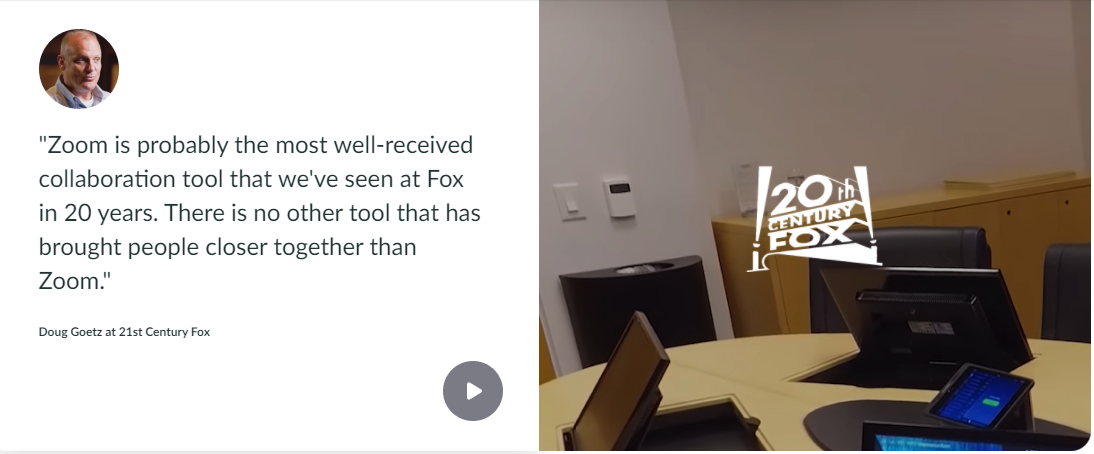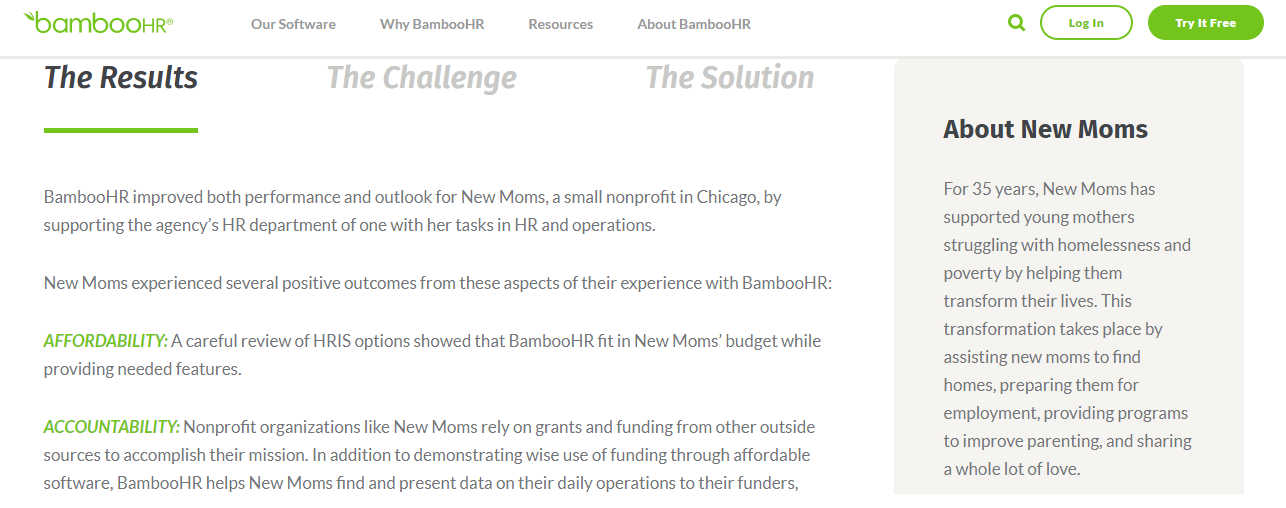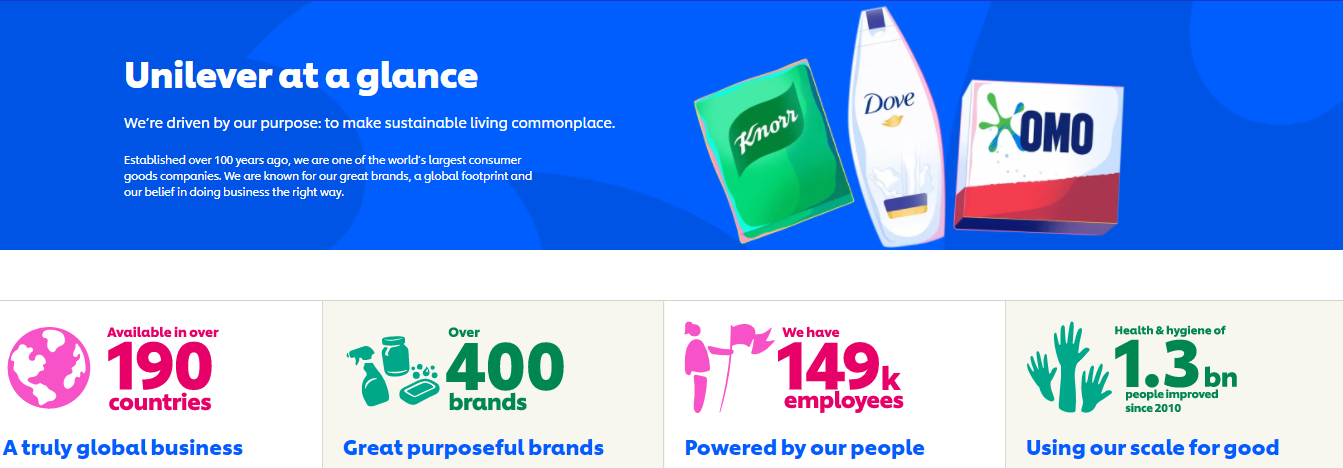Many customers will often give you straight-to-the-point feedback when you run a traditional brick-and-mortar business.
If they’re unsatisfied with your customer service, they complain, and you fix it. And if more customers constantly ask for a particular product brand, you simply add it to your inventory to satisfy them.
With 95 percent of people sticking to a brand because of great customer experience, harnessing customer feedback can help with customer retention and provide a competitive advantage in the market.
However, as an entrepreneur, you might have to walk the extra mile to gather customer feedback that points out certain things about your business. How do you gather useful feedback and make the most of it?
Read on. This article will discuss seven strategies to harness customer feedback and use them to your advantage.
1. Be Fluent in Your Customer’s Language
Customer feedback can help you become fluent in your customer’s language. Just as it’ll be a struggle communicating in a different language, you’ll encounter a disconnect when you don’t speak the “search” language of your target market. This language forms the basis of a customer’s perception and expectation of your brand.
That’s why customers are likely to make a purchase when you incorporate specific keywords into product copy and descriptions. When you use an unknown keyword, customers are not likely to find your product copy and descriptions when they search on Google.
In other words, if your business caters to an e-sport audience, for instance, using keywords like “gaming PC” or “gaming chair” will garner more conversions. Why? Because that’s precisely what your customers are looking for on Google. On the flip side, keywords such as “chair” and “PC” may not appeal to a gamer’s needs.
Consider using keyword tools such as Semrush, Ubersuggest, or Keyword planner to figure out your customer’s language. Doing this will increase conversions and keep customers satisfied.
2. Make the Customer Experience Better
Customer experience is the overall impression a customer has of your business, which is why it is crucial to your business’ growth. Businesses can improve customer service with VoIP systems, leveraging advanced features like call routing and analytics to enhance customer interactions and responsiveness.
Improving customer interactions goes beyond effective communication; it involves establishing an organized, transparent, and efficient process that meets client expectations. One powerful way to achieve this is by implementing a dedicated client portal.
Such a platform enables businesses to consolidate project management tasks, securely share essential documents, and closely monitor client engagement—all within a single, easily accessible system. This centralized approach not only enhances collaboration but also builds stronger, more trusting relationships with clients by providing a smooth and efficient user experience.
When starting a business online, incorporating customer feedback into your product development strategy can lead to more successful launches and higher customer satisfaction.
That said, it’s imperative to improve a customer’s experience when they leave negative feedback on your product or service.
Analyzing negative customer feedback gives you the opportunity to make necessary improvements and identify business defects that can make the customer experience better. In addition, fixing business processes based on your customer’s expectations motivates them to become brand advocates, increasing brand loyalty.
Incorporating these strategies into your business plan template ensures a comprehensive approach to enhancing customer satisfaction and fostering long-term loyalty.
Listening to customer feedback transforms into a heartwarming experience, akin to gathering around a cozy campfire where every story told forges deeper connections.
It’s in these genuine moments, through open hearts and attentive ears, that our use of tools like WA Web Plus helps our business transcend traditional boundaries—allowing it to breathe, laugh, and learn alongside the people we serve.
Each piece of feedback pulses like a heartbeat within us, creating a shared rhythm that guides our journey. We evolve from being merely a brand to becoming a trusted companion, flourishing together in the warmth of our collective narratives and experiences.
Gather customer feedback via short surveys or questionnaires on social media or via email to get honest information from your customers. Also, consider that some customers might want to fill out this survey anonymously.
One simple way to achieve this would be to create a QR code that customers can scan and leave their anonymous feedback.
Businesses can enhance networking by linking QR codes to a digital business cards platform for seamless connections. Customer insights don’t just live in formal surveys—they’re hiding in those casual conversations your sales team has every day, in the support tickets that seem mundane, and in the social media comments people leave when they think no one important is listening.
The real gold often comes from reading between the lines of what customers actually say versus what they truly mean, requiring a kind of emotional intelligence that goes beyond data points.
This method shines particularly in brick-and-mortar settings, where patrons can swiftly scan the code with their smartphones, sharing their thoughts in real-time.
This strategy bridges the gap between digital and physical interactions. Furthermore, QR codes can be strategically placed on receipts, product packaging, or even in-store displays, making them a versatile tool for capturing opinions.
Furthermore, integrating a QR Code Scanner into your strategy not only acts as a dynamic catalyst bridging the gap between digital and physical realms but also infuses an interactive layer into the broader customer experience.
Actively encouraging customers to engage with strategically placed QR codes on receipts, product packaging, or in-store displays transforms their journey into an interactive exploration. This strategic approach creates a seamless pathway for customers to access exclusive content, explore promotions, and effortlessly gather additional information.
Additionally, incorporating marketing events into this strategy can further enhance customer interaction by providing opportunities for in-person engagement and feedback.
As customers embrace this interactive element, it not only elevates their engagement but also contributes to a more personalized and enriched brand interaction, nurturing a heightened sense of accessibility and involvement in the brand’s offerings.
By simplifying the process and enhancing accessibility, you increase the chances of patrons voicing their experiences.
Here’s an anonymous customer feedback survey from AirBnB:
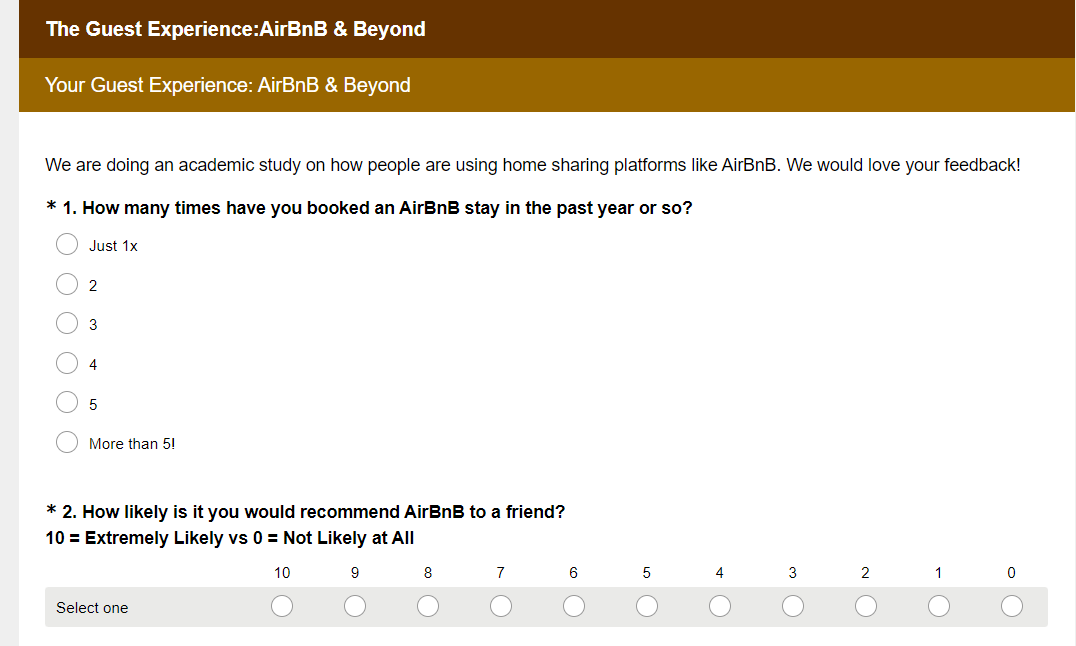 Source: Survey Monkey
Source: Survey Monkey
As you can see, Airbnb asks for customer feedback in a non-intrusive manner. When adopting a similar strategy, your customers will like to know ahead of time how long the survey will take and what will be done with the data. They’ll be more willing to provide information if they feel it will benefit other customers.
In today’s customer-centric business landscape, the importance of gathering insights through customer feedback in a non-intrusive manner cannot be overstated. Airbnb sets a notable example by engaging their users in a considerate manner when seeking their opinions.
When implementing a similar feedback strategy, transparency becomes key – ensuring customers are informed in advance about the survey’s duration and the purpose of collecting their data fosters trust and encourages their active participation.
Customers are more inclined to share valuable insights when they perceive it as contributing to the betterment of the overall customer experience, ultimately creating a win-win situation for both businesses and their clientele.
Alternatively, being proactive and seeking the opinions of previous customers can give you an idea of how you performed in the past and where to work in the future.
Using customer feedback tools like Zonka Feedback helps gather relevant insights efficiently and stay on track. The art of gathering feedback is all about striking that sweet spot between curiosity and respect. Companies nailing their feedback game know that customers don’t just hand over insights for fun – they need to see the value coming back their way.
Just look at how the most successful brands handle it – they’re upfront about survey length, crystal clear about how they’ll use the data, and actually show customers how their input shapes what’s coming next. It’s like having a conversation with your customers instead of interrogating them.
Leveraging these relevant customer experience metrics keeps you on your toes and improves the customer experience in the long run.
You need to pay attention to the positive feedback your customers leave as well. If they say, for instance, that your website is great because it has great content that gives actionable insights, then continue creating content that gives actionable insights and uploading it to the website. If they tell you your website loads really quickly, then make sure it stays that way. Continue optimizing your website, be it a B2C marketplace platform or a B2B one, to ensure it works at an optimal level. Feedback, whether positive or negative, can help you make the necessary adjustments to ensure you deliver an excellent customer experience.
3. Social Proof in the Form of Consumer Feedback
When customers leave you a positive review, make the most of it. One way to leverage positive reviews and testimonials is through social proof.
With social proof, any visitor encountering your business for the first time feels motivated to patronize you. Why? Because they’ll feel at ease purchasing something someone else approves of. It’s human psychology.
Remember the last time you ordered a product from a website like Amazon? You probably read reviews from other users before buying that product. Now, that’s social proof. On the contrary, you wouldn’t feel so motivated to get it if all you read were negative reviews, right?
Social proof plays a pivotal role in consumer decision-making, shaping perceptions and influencing purchasing behavior. When you ordered a product from a platform like Amazon, the reviews from fellow users served as a form of social proof, guiding your choice. Positive reviews create a sense of trust and motivation, compelling potential buyers to make informed decisions.
Conversely, a lack of positive social proof or an abundance of negative reviews can significantly dampen the enthusiasm to purchase, underscoring the profound impact social proof has on shaping consumer confidence and choices.
Using positive customer feedback on your website is effective in optimizing conversion rates, as almost nine out of ten users will read online reviews before buying from you.
In today’s digital marketplace, strategic video testimonial examples serve as conversion catalysts, breathing life into customer experiences in ways that text reviews never could. The most impactful video testimonial examples showcase a perfect blend of authenticity and specificity, where real customers share their transformation stories with genuine emotion and tangible results.
Whether it’s a startup founder detailing how a service streamlined their operations, or a long-term client revealing the measurable impact on their bottom line, these visual testimonials create an immediate connection with prospects. By capturing the nuances of customer satisfaction – from facial expressions to tone of voice – video testimonials transform abstract benefits into concrete, relatable experiences that potential customers can envision for themselves.
Unleash the persuasive power of social proof by choosing to embed Google reviews on website pages, transforming your digital storefront into a trust-building powerhouse. This strategic move isn’t just about showcasing praise; it’s about creating a living, breathing testimonial to your brand’s excellence. As visitors scroll through your site, they’re greeted by a mosaic of authentic experiences, each review a window into the satisfaction of real customers.
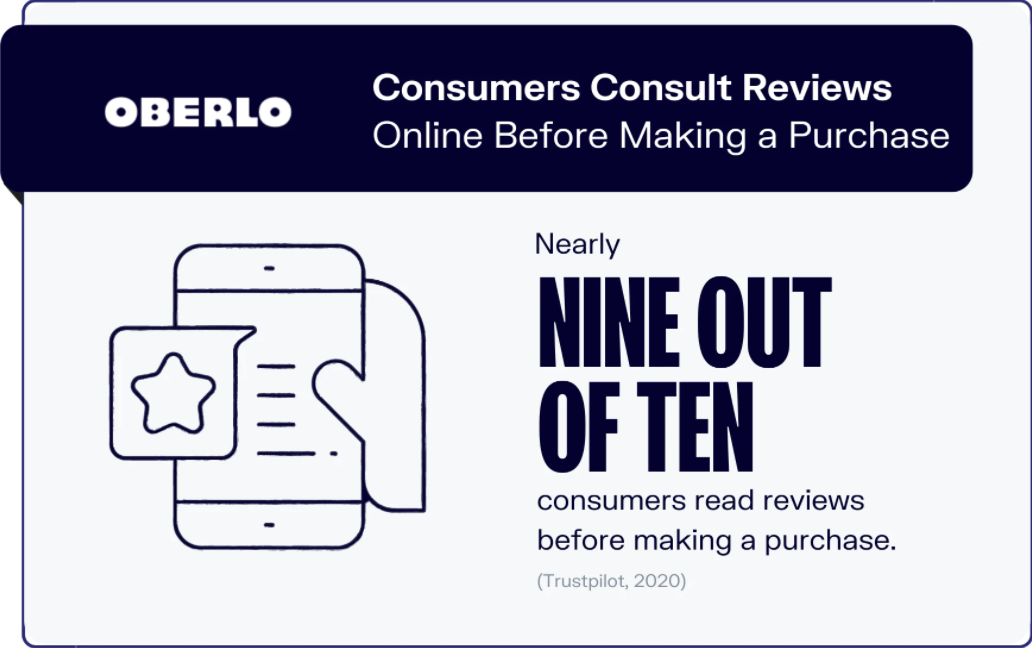 Source: Oberlo
Source: Oberlo
Although social proof comes in different formats, the end goal is usually the same —to increase conversions. For instance, Chime, a mobile banking app, leverages in-app reviews on the front page of its website.
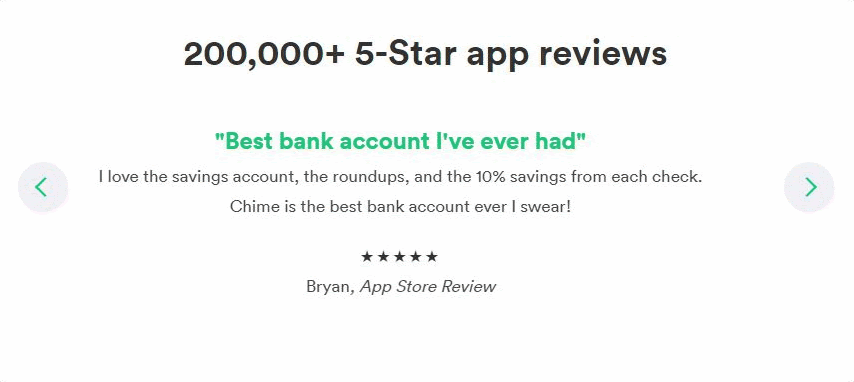 Source: Chime
Source: Chime
Customer reviews like the ones above lend credibility to Chime’s financial service. Notice that there are two ways Chime achieves this. There’s the numerical social proof there, the 200,000 5-star app reviews, and the text reviews about the app being the best there is around.
To do something similar, you could consolidate all reviews and testimonials from different social channels together and use them on your website’s landing page. Make sure each testimonial is attributed, at the very least, to a name and an organization the person is affiliated with (see the Chime example). You don’t want your audience thinking any testimonial is fake. If you can include pictures of the people who gave those positive testimonials, better.
Check out this example from a big company like Zoom:
Source: Zoom
The videoconferencing platform even includes a video of that same testimonial right beside the written testimonial. One look at this and any doubt as to the veracity of the testimonial just disappears.
In this age of digital authenticity, how video testimonials transforms the landscape of social proof cannot be overstated. Unlike traditional written reviews, the raw authenticity of a customer sharing their experience on camera creates an immediate emotional connection that transcends mere words on a screen.
When a satisfied client’s voice quivers with genuine enthusiasm or their eyes light up while describing their journey with your product, it creates an undeniable ripple effect throughout your audience.
The way video testimonials transforms mundane customer feedback into compelling narratives helps potential customers envision themselves achieving similar success, making these visual stories one of the most powerful tools in your social proof arsenal. This dynamic form of social validation doesn’t just tell your brand’s story; it brings it to life through the authentic voices and faces of those who’ve experienced it firsthand.
You can also consider creating a case study from success stories and reviews of previous satisfied customers. This takes the social proof game up a notch by providing an in-depth view of different customers’ experiences and how you helped solve their problems.
Let’s take BambooHR as an example.
Source: BambooHR
The company, which sells human resources software, doesn’t just copy and paste a testimonial from one of its satisfied customers. It explains the customer’s detailed journey before and after the use of the BambooHR software. You’ll even find a sidebar that details who the BambooHR customer is, New Moms, and what exactly it does. If you scroll above, you’ll see a picture of the HR director at New Moms and her video testimonial. Because there are many details to include, BambooHR even dedicates one entire website page to this New Moms case study.
You can leverage other forms of social proof: expert opinions from industry trust icons, social media engagement metrics such as likes and shares, etc. As a small business, leveraging consumer feedback from satisfied customers will not only increase conversion rates but improve your overall business reputation.
But don’t forget that one of the key aspects is social media metrics. Once you find the most loyal audience, you can experiment and recruit additional audiences through individual case studies. This will help identify the strengths of your marketing, gain a loyal audience, attract the attention of your competitors’ audience, and lure them over to you.
Important to track organic metrics, as some companies tend to buy likes on social media, which is bad in the long run and doesn’t give a clear understanding. Some companies consider their employees as their most loyal users and listen to their opinions, based on which they introduce new features, reduce customer effort, increase customer centricity and improve results.
This is the ideal audience for beta testing new features and products since your employees know your product better than anyone else and are adept at selling it to your clients. In this way, they take the market away from your competitors.
4. Convert Happy Customers to Brand Ambassadors
Feedback allows you to convert happy customers to brand ambassadors. As a brand, you should monitor who consistently gives you positive feedback. For one, you can showcase that positive feedback on your website or other marketing platforms. For another, you can reach out to that happy customer and, well, make them love you even more.
Converting satisfied customers into brand ambassadors is an invaluable way to grow your business. Brand ambassadors bring in their own personalities to communicate with customers personally, making it a great way to reach a new audience.
Moreover, you don’t need a huge marketing budget to get new brand ambassadors for your business.
So, how exactly can you transform those happy customers into brand ambassadors? Here’s what you do—rally customers who endorse your business and offer them special brand perks and privileges. For instance, you can use email marketing to gather their feedback in exchange for exclusive freebies.
Take it a step further by offering discount codes to these ambassadors to incentivize their audience to patronize you. You may even launch an affiliate program if your budget allows it.
Many savvy business owners launch an affiliate program that transforms their most loyal customers into active revenue partners. By sharing unique tracking links, these ambassadors earn commissions when their referrals convert – creating a powerful win-win arrangement that incentivizes authentic promotion.
Unlike traditional advertising where you pay upfront with uncertain returns, affiliate marketing only costs you when actual sales happen, making it incredibly cost-effective for growing businesses. The data from these programs also reveals which messaging and audiences connect best with your offerings, providing valuable market insights beyond the immediate sales impact.
Since seven out of ten consumers will likely purchase an item based on social media referrals, you can leverage brand ambassadorial activities to build an audience.
Crafting the right message can make a significant difference in how your brand is perceived, particularly in highly competitive markets. For instance, imagine launching a “Fortnite Spiderman” campaign, where you partner with influencers who are avid gamers and Marvel fans. These influencers can create unique content, weaving the excitement of Fortnite with the adventurous spirit of Spider-Man, thereby attracting their substantial followings to your brand.
By engaging with such a dynamic theme, your brand could capture the imagination of a diverse audience, ranging from hardcore gamers to superhero aficionados. This approach not only capitalizes on the influencers’ credibility but also infuses your marketing efforts with an element of play and excitement that resonates well with the youth demographic.
Additionally, by integrating feedback mechanisms into these campaigns, you enable a two-way communication street, enhancing customer involvement and loyalty.
5. Provide More of What Your Customers Want
It’s natural to sell various products, especially when starting a business, to see what works.
However, as the business grows, you will discover the products that appeal more to customers through their feedback. These are the products you should focus on.
Holger Sindbaek, serial entrepreneur and the founder of the brain training platform Online Solitaire, says, “When we started receiving feedback from our players about wanting more challenging game modes and the ability to personalize their solitaire experience, it was a clear signal that our audience desired more than just the standard gameplay.
We didn’t rush to overhaul the entire platform; instead, we honed in on these specific desires. By introducing advanced difficulty levels and allowing for customizable card designs, we focused on enhancing the player experience in ways that truly mattered to them. This approach not only deepened player engagement but also reinforced the importance of listening closely to what our users truly want, ultimately helping us create a more personal and rewarding game for our community
Stick to the products with more positive reviews. Then, improve the one without, or ditch it if you believe it’s not worth the effort. Apple ditched all its previous computer models, built better ones in later years (along with other products), and has since grown exponentially.
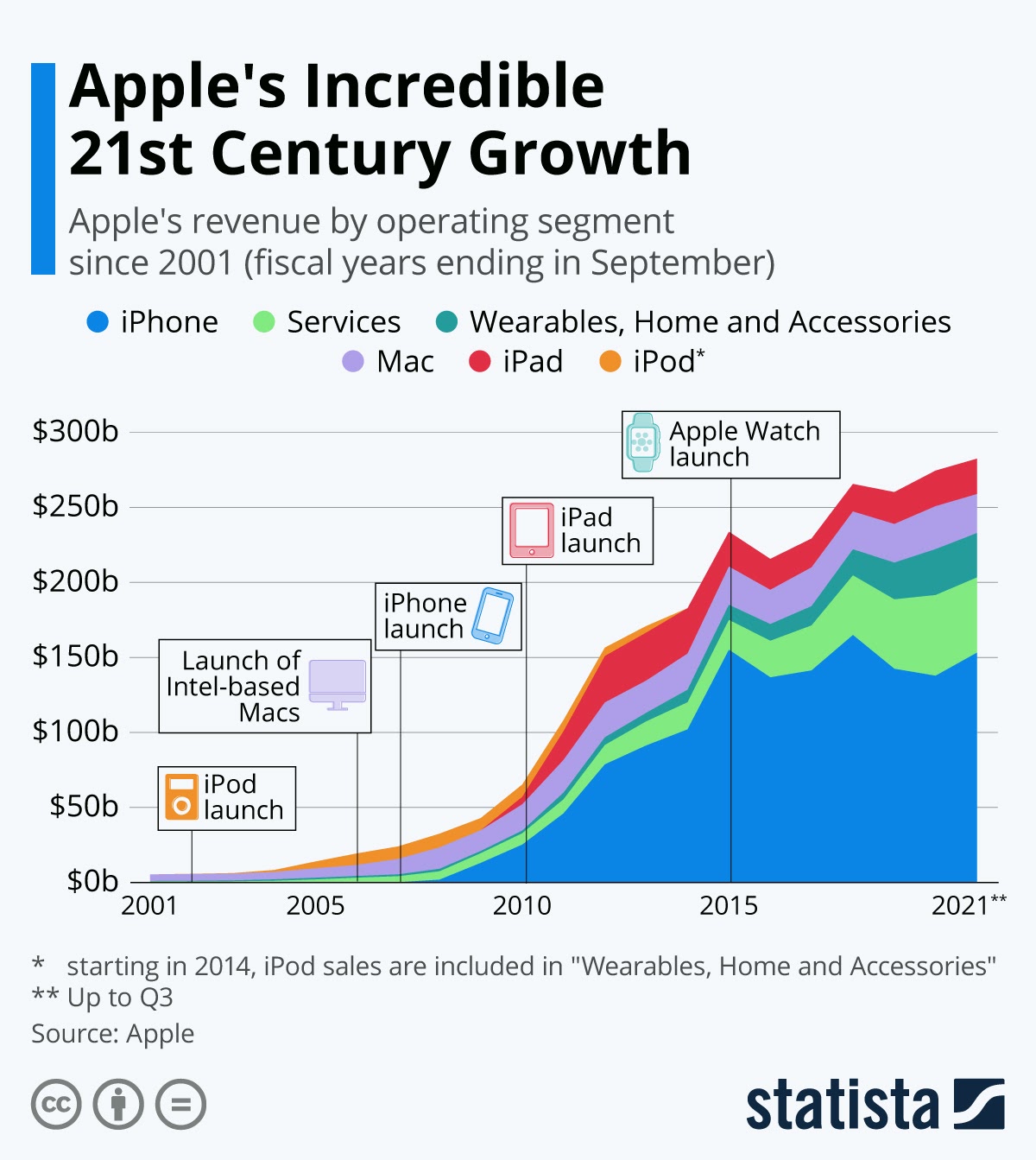 Source: Statista
Source: Statista
Customer feedback is a strong indicator of what your audience appreciates regarding products, services, and content.
The feedback loop extends beyond digital products into physical workspace solutions as well. When businesses actively solicit opinions about office chairs, they often uncover invaluable insights about employee comfort, productivity, and workplace satisfaction that transcend mere furniture preferences.
A well-designed ergonomic office chair becomes not just a place to sit, but a critical touchpoint in the employee experience—one that generates passionate feedback ranging from detailed ergonomic specifications to emotional responses about comfort during long workdays.
Forward-thinking companies recognize that office chairs represent a daily physical interaction with their brand values; when they implement improvements based on this targeted feedback, they simultaneously enhance workplace wellness and demonstrate a commitment to employee wellbeing that resonates throughout the organization.
6. Broaden the Range of Goods and Services
Customer feedback can help you find opportunities for product expansion. You can determine which of your product lines you can expand based on customer reception. If a product gets good reviews consistently, chances are, the products related to it will perform well, too.
That’s not to say you’ll jump at the chance to expand as soon as you monitor those positive reviews. You still need to confirm straight from your customers whether or not they would actually receive such an expansion well. Send them a survey asking them directly about this. If they give you their approval, then by all means go ahead and expand that product range.
Expanding your range of goods and services is a key customer retention strategy. A more comprehensive product range provides more options to returning customers, which improves their loyalty. It also increases your chances of attracting new customers and gives you a firm idea of what works and what doesn’t in the market.
Here’s a scenario: you sell wristwatches, like Tissot, and you have loyal customers who return to buy watches on occasion. Expanding your range of goods to include luxury wear will make your customers spend more on those related items and occasionally visit your site. Along with that, you’ll also have more customers visiting your website because of the new catalog.
Unilever is an excellent example of a company that has expanded its range of goods and services into multiple brands. They are a global business with products available in 190 countries, with 2.5 billion people using its products each day.
Unilever has multiple brands and multiple products. As a result, when a customer makes a purchase and requires a similar item to support the one they just bought, they wouldn’t have to look far. On top of that, they can cater to the needs of multiple people across a diverse group of people.
By increasing your product offerings, you can retain customers and attract new ones, hence expanding the business’ reach.
In the realm of fearless business, expanding product lines based on customer feedback isn’t just about incremental growth—it’s about boldly reimagining your entire market landscape. A truly fearless business approach involves diving deep into the undercurrents of customer desires, surfacing with innovations that customers didn’t even know they needed.
This audacious strategy transforms feedback into a launchpad for revolutionary products, catapulting your brand from mere supplier to industry visionary. By embracing the fearless business mindset, you’re not just responding to market demands; you’re orchestrating a symphony of customer delight, composing product lines that resonate with both current needs and future aspirations.
This forward-thinking stance doesn’t just expand your reach—it redefines the very boundaries of your industry, positioning your brand as the fearless pioneer that customers can’t help but follow into new, exciting territories.
7. Generate New Business
Customer feedback can also help you identify opportunities for venturing into a different niche with a different market (as opposed to just expanding your product line), or pivot operations.
Understanding what is board portal can help businesses streamline their decision-making processes and enhance communication among board members when analyzing customer feedback and market trends.
For example, if you’re a company that sells hair care products for women and you find customer suggestions you should sell hair care products for dogs, too, you can consider that as a potential opportunity and start doing your research on whether venturing into that new niche would be profitable for you.
If your research tells you it can be profitable, then you can start your planning. Customer feedback can be used to identify potential opportunities for new business. Use it to your advantage.
Customer feedback can be a goldmine of unexpected opportunities that most businesses completely miss. The real magic happens when teams dig deeper than surface-level comments and start seeing the hidden potential in what customers are actually saying.
Sometimes a random suggestion can reveal an entire market segment waiting to be explored, turning what seemed like a throwaway comment into a breakthrough business strategy.
Conclusion
Customer feedback is essential data for a growing company. Regardless of the type of business you run, you’ll need customer feedback to make better strides while gaining a competitive advantage.
You can gather customer feedback in various ways, such as via email surveys, questionnaires, and online polls. However, collecting this market intelligence is one thing; utilizing it correctly is another.
Leverage customer feedback to improve and expand your business offerings. Convert satisfied customers to brand ambassadors, and while you’re at it, consolidate relevant positive reviews from multiple channels and turn them into social proof on your website.
These, along with other strategies mentioned in this post, will help take your new business to the next level.
